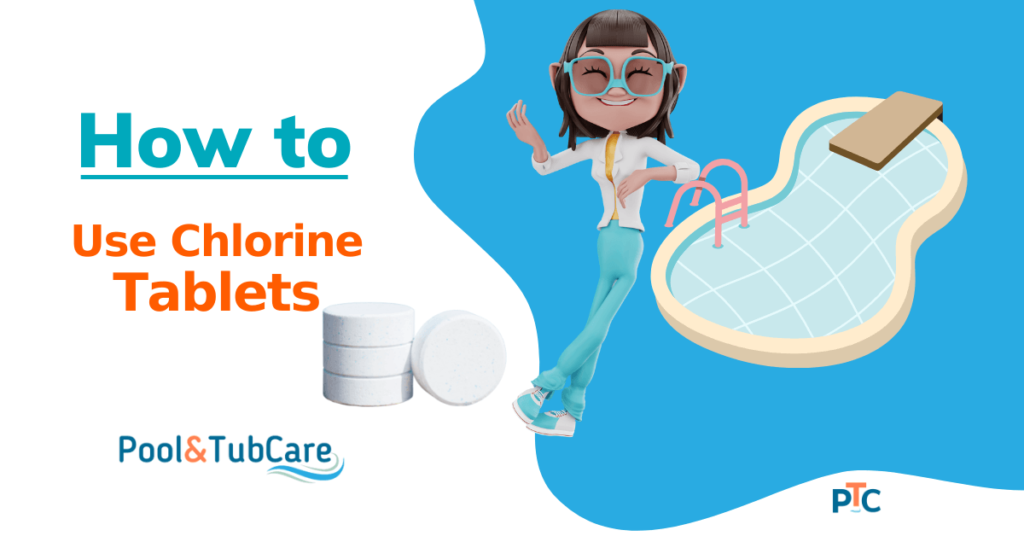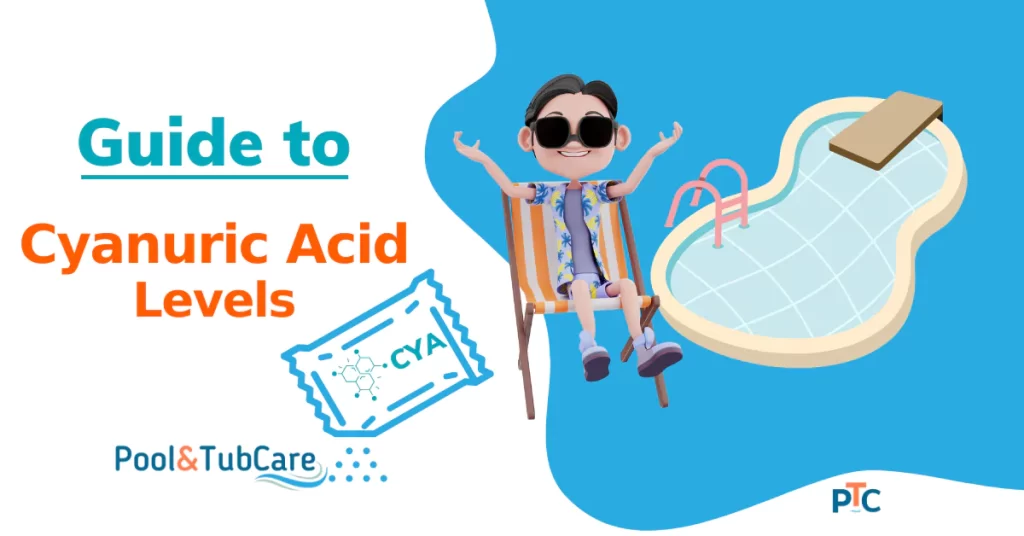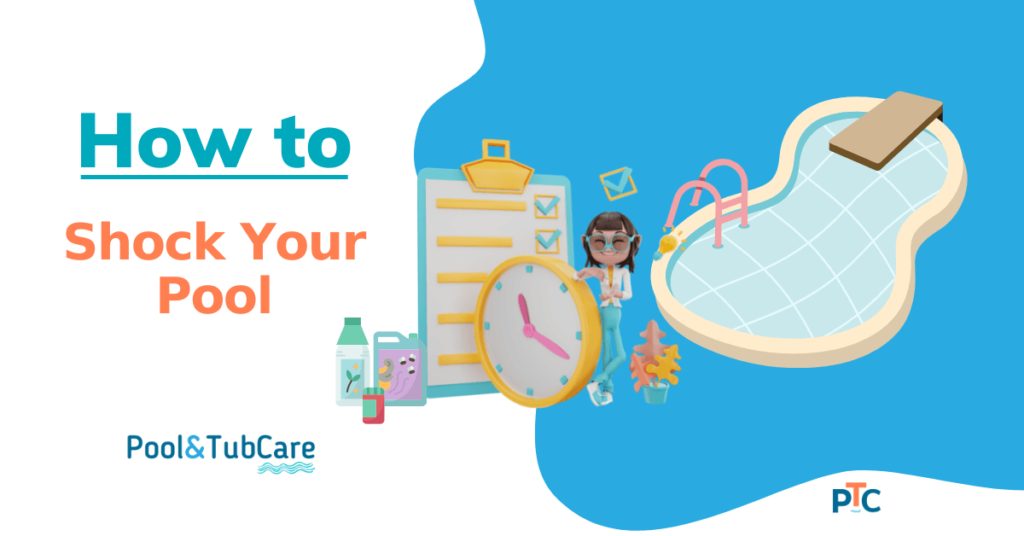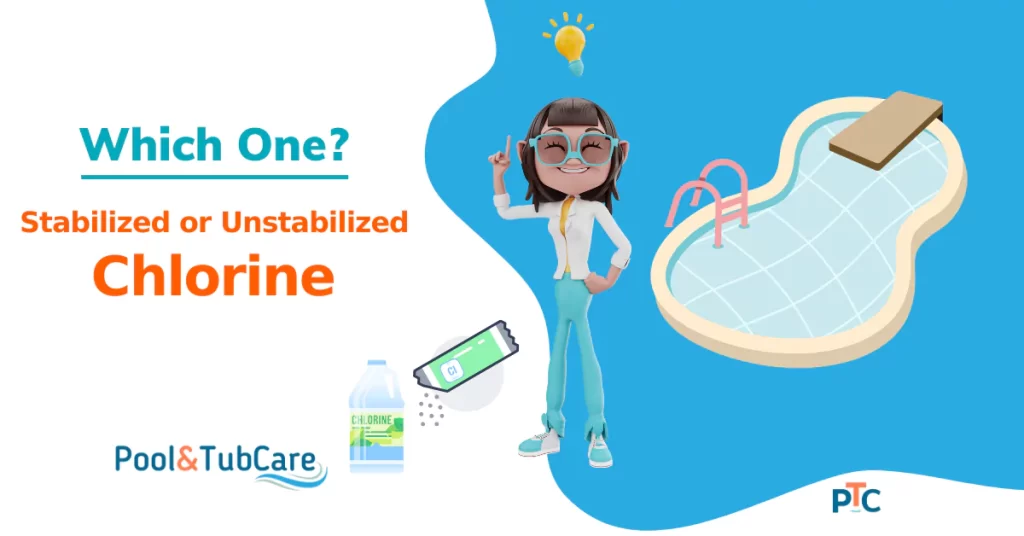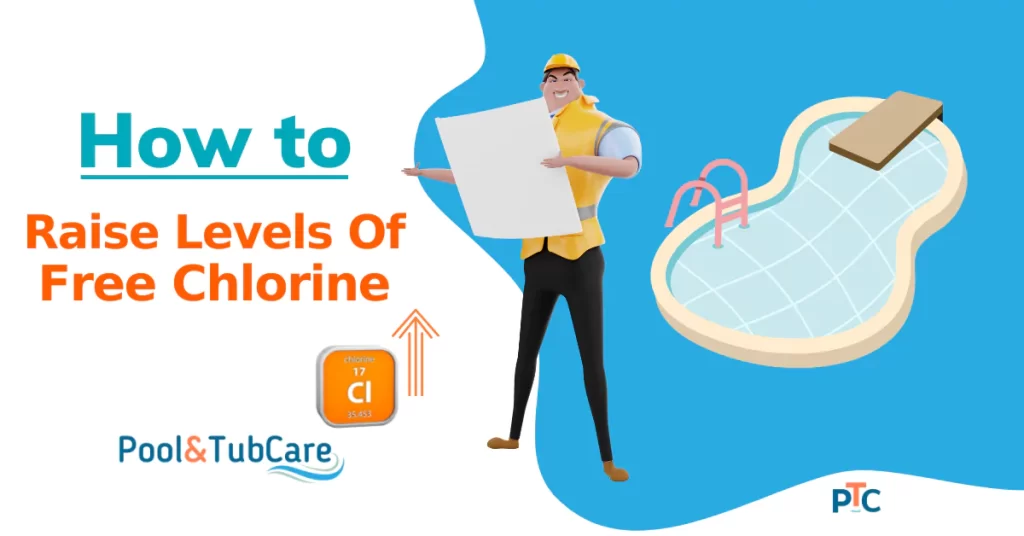Every pool owner knows how much work goes into maintaining a pool, so they deserve all the perks that come with their backyard pool.
Other than skimming leaves and scrubbing walls, pool owners need to maintain perfect water chemistry because water may look clean, but it can contain many microbes if not sanitized properly.
Chlorinating your pool is one of the most important ways to keep it clean and safe for swimming. Chlorine tablets are an easy and effective way to do this.
There are a few different ways to add chlorine tablets to your pool. You can place them in a floating dispenser, automated pool chlorinator, or directly into the skimmer basket. Of these, an automated pool chlorinator is the best hand-off method to use chlorine tablets.
In this post, I will show you everything you need to know about chlorine tablets for your pool.
What Does Chlorine Do
Chlorine is very important for any pool or spa. It kills any kind of harmful organisms present in water like viruses and bacteria.
When chlorine is added to pool water, it forms hypochlorous acid, a weak acid, and this acid kills bacteria and other pathogens in water by oxidizing them.
Chlorine also helps prevent algae growth, which can quickly take over a pool if left unchecked.
Free chlorine (available for sanitization) also combines with the organic waste matter, disinfects it, and makes chloramines.
Ideal Chlorine Levels
For chlorine to work correctly, it should be adequately concentrated.
Recommends minimum free chlorine concentration in pool water is one ppm (parts per million) and maximum is 3ppm.
Below 1ppm can cause micro-organism growth, and above 5ppm can cause eye and skin irritation.
You should monitor free chlorine levels daily or on alternate days, as they can quickly change.
What are Chlorine Tablets
These are fixed-size chlorine tablets that are used for sanitizing the pool.
The concentration of chlorine in these compressed tablets can be very high (more than 90%).
The tablet slowly dissolves in water and releases chlorine into the pool. The chlorine then goes to work sanitizing the water.
Most chlorine tablets come with cyanuric acid, a stabilizer that protects chlorine against sunlight (UV rays). They are labeled as stabilized and are best used in outdoor pools.
Some tablets also contain algaecides and other chemicals that help keep your pool water clean and clear.
Different Types of Chlorine Tablets
Chlorine tablets usually come in 1-inch or 3-inch sizes, and the 3-inch size is the most popular and most cost-effective. The size you need will depend on the size of your pool.
1-inch chlorine tablets are typically used in small above-ground pools, while 3-inch tablets are better suited for larger in-ground pools.
Depending on your pool size, you can choose among them.
Related: Difference between chlorine tablets vs granules!
Benefits of Chlorine Tablets
Chlorine tablets are a go-to option for many pool owners due to following reasons:
1. Easy to Use
Simply drop the tablet in the skimmer or chlorinator, and it’ll do its job without any further intervention from you. You won’t need to worry about handling chemicals or measuring dosages.
2. Slow Dissolving
Chlorine tablets dissolve slowly, allowing them to work for long periods without requiring frequent replacement.
3. Stabilized
Chlorine tablets are often stabilized with cyanuric acid, so they are less likely to be affected by sunlight and are a great option for outdoor pools.
4. Less Mess
Unlike granular chlorine, which can mess up your house or get on your clothes, using chlorine tablets avoids making any mess.
5. More Cost Effective
Chlorine tablets seem more expensive initially, but they are generally more cost-effective than liquid chlorine, making them the preferred choice for many pool owners.
Things to Consider When Using Chlorine Tablets
1. Stabilizer
Chlorine tablets (dichlor and trichlor) usually contain cyanuric acid, a stabilizer that helps protect chlorine from the sun’s UV rays.
This can be beneficial in outdoor pools but can also cause problems if the cyanuric acid level gets too high.
As you keep using chlorine tablets, chlorine gets used, but cyanuric acid accumulates over time.
If levels of stabilizer go above 50ppm, it can hinder the activity of chlorine.
So, if you are using chlorine tablets, keep a check on cyanuric acid levels.
You can use unstabilized chlorine tablets (cal-hypo), but that can add calcium over time. So choose the right type of tablet based on your pool needs.
2. Algae
Chlorine tablets prevent algae growth but won’t kill the existing algae.
If your pool is experiencing algae growth, you need to use a shock or algaecide treatment.
3. Chlorine Demand
In a pool with frequent use, chlorine tablets may struggle to maintain the proper chlorine levels.
If chlorine levels are not maintained regularly, they may lead to long-term problems.
4. May Harm Pool Equipment
If you are using floaters for chlorine tablets, they may get stuck in part and make that area chlorine rich, and chlorine can damage the area.
How Many Chlorine Tablets to Add to your Pool
That is the most important question everyone who uses these tablets ask. To know the exact answer, first, you need to know the size of your pool and the amount of water in it.
Here are the formulae for different types of pools.
Rectangular Pool: length x width x average depth x 7.5 = Volume in Gallons
Circular Pool: radius squared x pi(3.14) x average depth x 7.5 = Volume in Gallons
You can use this tool to calculate the water in your pool.
Generally, 5,000 gallons of water needs one 3-inch tablet.
For smaller pools, you can use 1-inch chlorine tablets. For larger pools, a 3-inch chlorine tablet is a better option.
So if your pool is 10,000 gallons, you need two 3-inch tablets per week. Divide your pool water volume by 5,000, and that is the number of tablets you need.
| Water Volume (gallons) | No. of Tablets |
|---|---|
| 2,500-6,000 | 1 |
| 6,000-11,000 | 2 |
| 11,000-16000 | 3 |
| 16,000-21,000 | 4 |
| 21,000-26,000 | 5 |
| 26,000-31,000 | 6 |
How to Add Chlorine Tablets to Your Swimming Pool
Unlike chlorine granules, you can not just throw them in water. That will be a disaster for your pool.
They contain a very high chlorine concentration and can cause chlorine levels to rise in small patches, which is dangerous for both swimmers and your pool.
That is why though it is effortless to use chlorine tablets, it still needs to be done in a proper way.
Here are the options you can use:
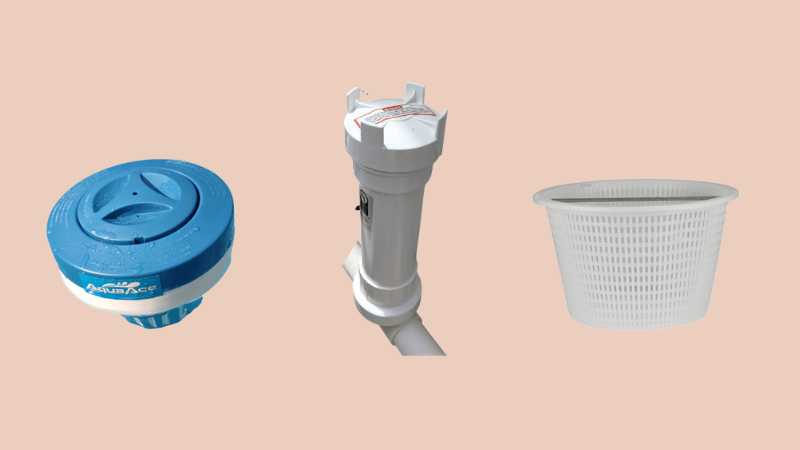
Floating Chlorine Dispenser
Many companies make these floating dispensers that are supposed to just float on your pool water.
You need to put chlorine tablets in the floater, which will dissolve through the holes of the floater.
The theory is that the floater will go around the pool and keep on releasing the chlorine throughout the pool.
If you are using floaters, you should take them out before swimming as they make small concentrated pockets of chlorine around them.
They often get stuck on places like ladders and steps and release a very high amount of chlorine in one area that can damage the lining or discolor the walls.
In my opinion, the cheapness of these floaters does not compensate for the untidy work they do in dispersing the chlorine in your pool.
Pool Skimmers
Using a skimmer basket is the most common and cost-effective method to add chlorine tablets to your pool.
The skimmer is responsible for sucking in water when the pool’s filtration system is running.
It contains a basket that acts as a pre-filter for waste. Water goes through this basket, is filtered, and returned to the pool via wall jets.
You can put the tablet in a mesh bag and put it in the skimmer basket.
When the filter is running, water circulates through the tablets, releases chlorine in your pool through return jets, and circulates it more effectively.
It is a much better option than a floating dispenser as it won’t get stuck, and also chlorinated water is circulated actively into the pool.
It may lead to highly concentrated chlorine water when the filter is not running and can damage the equipment.
You can circumvent this problem by removing the semi-dissolved tablets when turning off the filter.
You can set your pump on a timer or buy a variable-speed pump to save on electricity and continuously run the pump.
Note: Do not put liquid chlorine or granules in the skimmer basket, as they will quickly damage it.
Automatic Pool Chlorinator
This is the best option for using chlorine tablets. Automatic Pool chlorinator solves all the problems of the above methods.
It is installed in the filter system and is generally the last component where water enters the pool.
You need to set up the setting from 1 to 3ppm; for the rest, this dispenser will do. Automated chlorinators will constantly measure the chlorine levels in water and release the chlorine as per requirement.
It is best to manually measure the chlorine levels to crosscheck if the chlorinator is working correctly.
They slowly dissolve and release chlorine into your pool as and when needed.
They are expensive ($50-200), but the most effective way to use chlorine tablets.
Make sure the chlorinator you are using is compatible with the tablets you have, as most chlorinators come with standard size for 3-inch tablets.
Crushed Up Tablets or granules
There is another way to add chlorine tablets to your pool that differs from the above methods.
If you need a quick sanitization and don’t have chlorine granules or liquid chlorine, you can crush the tablets and spread them in the pool.
They won’t last for long but can do a quick sanitization. They can cause localized concentrations and can damage equipment.
Automate One Job of Pool Maintenance
So finally, something that you can leave for a few days on automation. Just add a few tablets to the automatic pool chlorinator and forget about it for a few days.
Tablets will slowly keep working in the background and provide a constant dose of chlorine to keep your pool sparkling clean.
Just make sure you are comfortable using them and know everything that should be considered while using them, like cyanuric acid levels.
FAQs
Here are a few frequently asked questions.
Can I put chlorine tablets directly in a pool?
Yes, you can add crushed chlorine tablets directly to your pool, but this is not recommended method to use chlorine tablets. You should use an automatic chlorinator or skimmer basket to use tablets. The crushed chlorine tablets method is only for quick emergency sanitization.
Where do I add chlorine tablets in the pool?
Chlorine tablets should be added to the automatic chlorinator, skimmer, or floater, mentioned in order of preference.
Is it better to put chlorine tablets in the skimmer or floater?
A floater is a good way to disperse chlorine tablets throughout the pool, but it can get stuck and can damage pool equipment. On the other hand, a skimmer provides a better option to distribute chlorine through flowing water.
How often should I add chlorine tablets to my pool?
Chlorine tablets should be added once a week. One three-inch tablet is sufficient for 5,000-gallon water, so if you have a 20,000-gallon pool, use four tablets weekly.

